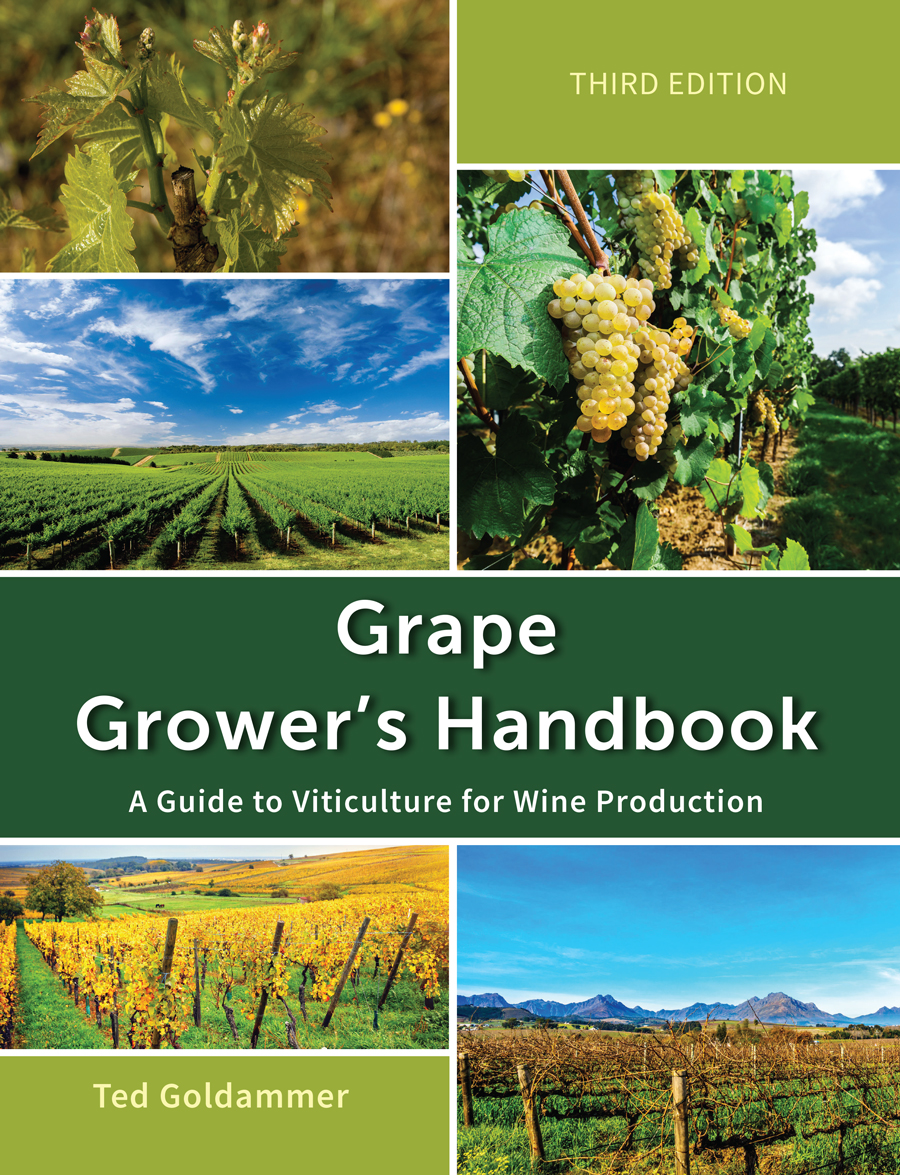Vineyard Nutrient Management
Essential Plant Nutrients
Nitrogen
Role and Deficiency Symptoms
Nitrogen plays a major role in the growth and development of all parts of the grapevine. Grapevines use nitrogen to build essential compounds including proteins, enzymes, amino acids, nucleic acids, and pigments including chlorophyll and anthocyanins of fruit.
Nitrogen tends to be the nutrient most frequently deficient in the vineyard. The classical symptom is an overall yellowing of the leaves, as opposed to dark green leaves of vines receiving adequate nitrogen (See Figure 16.4). In a deficiency situation, since nitrogen is a mobile nutrient in the vines, nitrogen will move out of older tissue and into young growing tissue. Thus, symptoms will first appear on the lower, older leaves. As the deficiency worsens, successively younger leaves will show symptoms with the most severe symptoms on the lowest, older leaves. Newly developing leaves often have a pale green color and should not be confused with nitrogen deficient leaves.
Assessing the Need for Nitrogen Fertilizer
As with most other macronutrients, tissue sampling can be used to determine the vines' nitrogen status. Tissue analysis results (Table 16.3) coupled with visual observations should indicate whether to apply nitrogen.
Time of Application
Nitrogen should be applied during the growing season preferably after budbreak through fruit set or postharvest.
Budbreak up through Fruit Set: A good timing for nitrogen fertilizer application is at fruit set (just after bloom), to correspond with rapid uptake and demand by developing clusters, and to a lesser extent by shoots and leaves.
Post Harvest: Generally, post harvest applications are made immediately after fruit harvest, to coincide with the late season flush of root growth.
Application Methods
Direct Soil Surface Application: Dry nitrogen fertilizers are applied directly to the soil surface either by banding in the weed-free strip, under the trellis, or by broadcasting over the vineyard floor in clean, cultivated vineyards.
Fertigation: Fertigation is another option in applying soluble nitrogen fertilizers.
Foliar Application Foliar Application: The use of foliar spray with macronutrients has limited benefits when compared to micronutrients. Some of the reasons were: 1) a complete lack of response (as with phosphorus), 2) no response unless many applications were made (as with nitrogen and potassium), 3) concerns with leaf phytotoxicity (as with magnesium), and 4) difficulty to elevate tissue levels due to nutrient immobility, as with calcium (Christensen, 2005b).
Soil Factors Affecting Availability
Nitrogen can be a limiting nutrient in some vineyards, particularly those on lighter soils with low organic matter.
Nitrogen Toxicity
Vines with excess nitrogen frequently have a dark green color, vigorous shoots, long internodes and somewhat flattened stems. Because of shading, many canes are green going into dormancy, making them more prone to freeze damage in cold areas. Often, buds are less fertile due to shading, and vigorous shoots may not make the best choices for fruiting wood during pruning.
Click on the following topics for more information on vineyard nutrient management.

